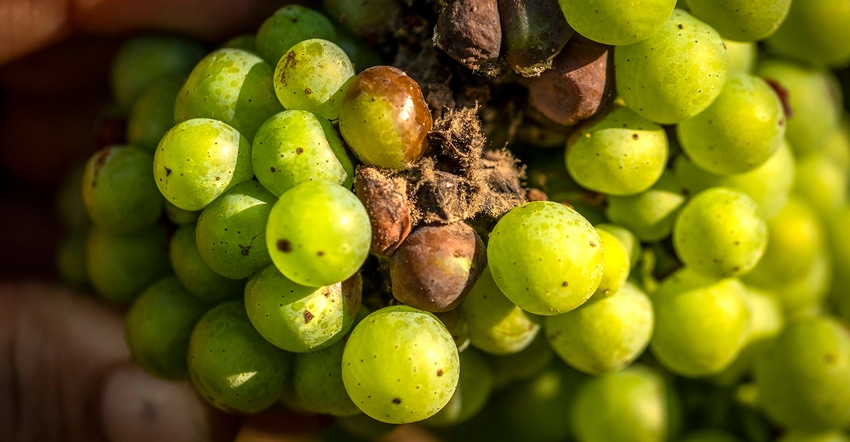June 1, 2019

Sponsored Content
For California grape growers, Botrytis is an all too familiar disease that can have a major impact on their crop. Increasing resistance issues add an extra level of difficulty when managing this disease. Many growers use biological fungicides to deal with these issues. However, some growers have had a difficult time successfully implementing biological products into their disease management programs.
For better success with biologicals, growers should look for a product that has a formulation that fits easily into their established crop protection programs. A product many growers have seen success with is Serifel® biofungicide from BASF.
“A large part of what makes Serifel biofungicide easy for growers to work with is its formulation,” said Mila Pearce, BASF Product Manager. “A grower needs to understand that these are living organisms that are constantly communicating with each other. Choosing the right formulation is important and aids in helping bacteria correctly identify their environment for optimal performance.”
The resting bacterial spores in Serifel biofungicide are able to adjust to a range of different environments. They have demonstrated the ability to withstand extreme temperatures and UV light exposure. On top of that, Serifel biofungicide is rainfast within three hours. While the conditions of these trials are more extreme than what happens in typical grape-growing areas, the trials help assure growers that the product can be effective in their vineyards.
A plan for better control
Successful Botrytis management is often achieved through an integrated approach that includes practices outside of biofungicide use. Canopy management practices such as shoot thinning, hedging and leaf removal can be used to allow for increased air circulation and dew reduction, creating an environment in which the disease is less likely to develop.
As the growing season progresses, growers’ integrated disease control plans should include biofungicide use. Botrytis won’t typically show up until later in the season when vines begin flowering. Growers should begin their programs for Botrytis control when flower clusters appear and berries begin to put on sugar.
“A great benefit of Serifel biofungicide is how well it works alongside conventional products,” said Pearce. “Serifel’s formulation has proven to be effective on resistant pathogens. As a partner for rotation, Serifel gives conventional chemistries an opportunity to work like the first day they sold on the market. This is more than just another rotational partner; it has a unique role in crop protection.”
From helping reduce resistance to preserving the yield and quality of a grape crop through Botrytis management, Serifel biofungicide is an excellent addition to a grape grower’s disease control program. To learn more about Serifel biofungicide and biological crop protection, contact your local BASF representative or visit GrowSmartGrapes.com.
Always read and follow label directions.
Serifel is a registered trademark of BASF.
© 2019 BASF Corporation. All rights reserved.
About the Author(s)
You May Also Like




